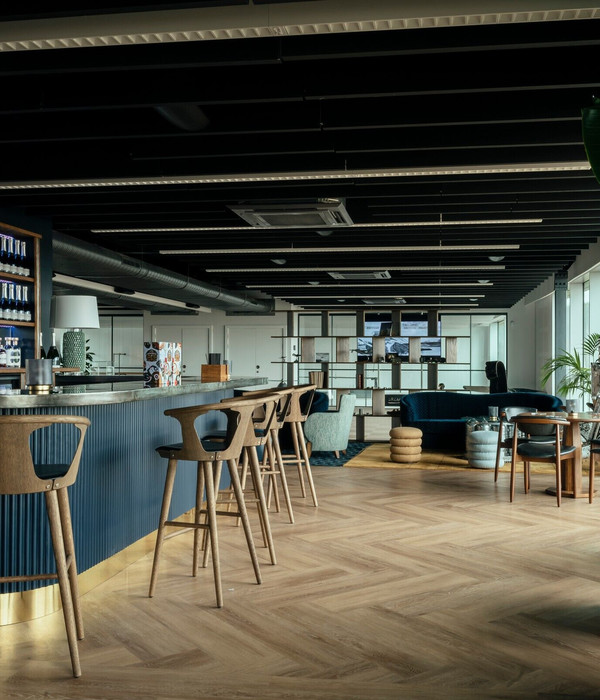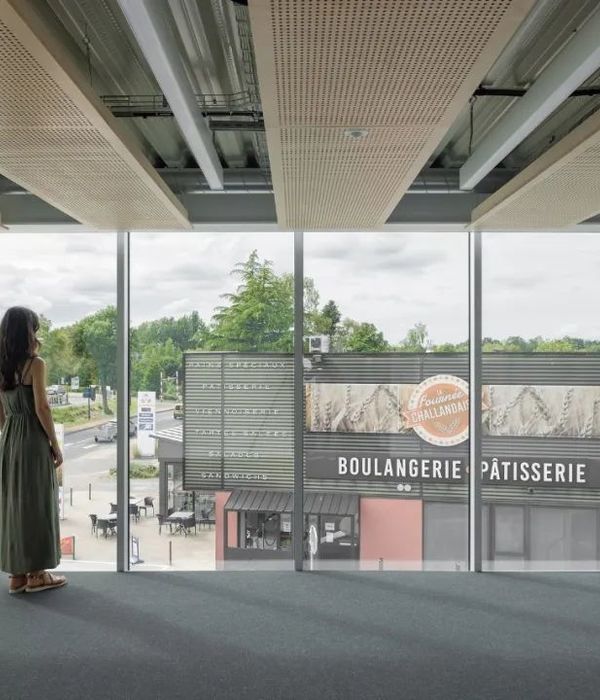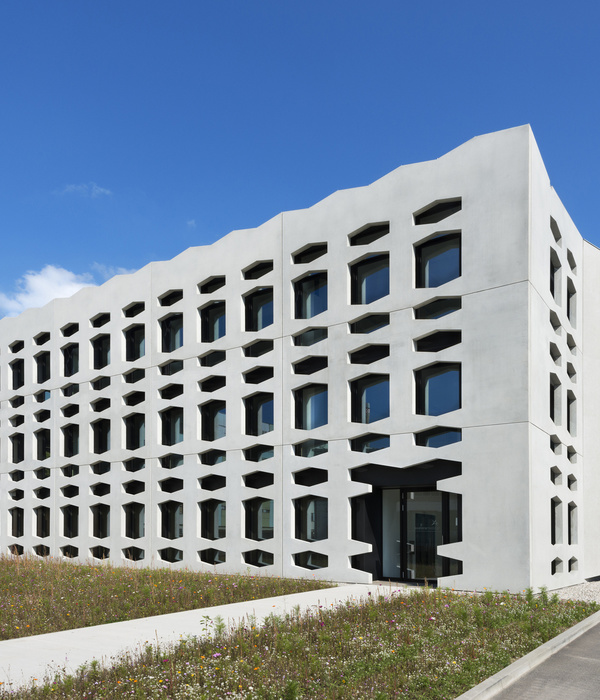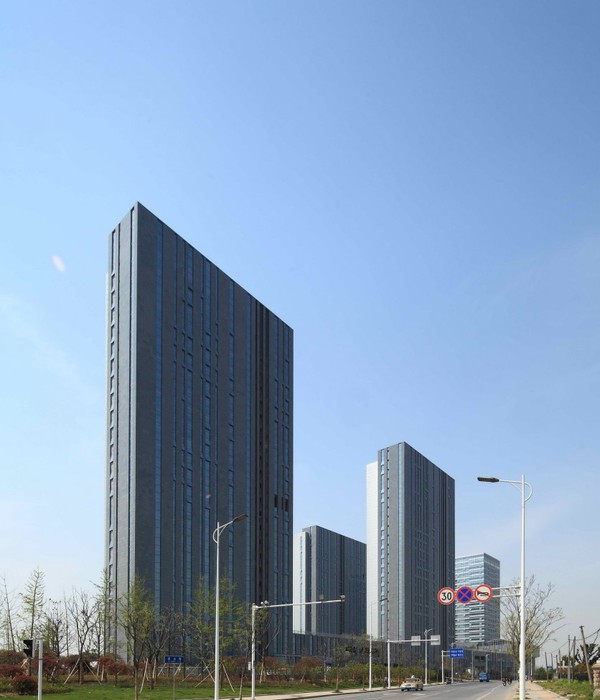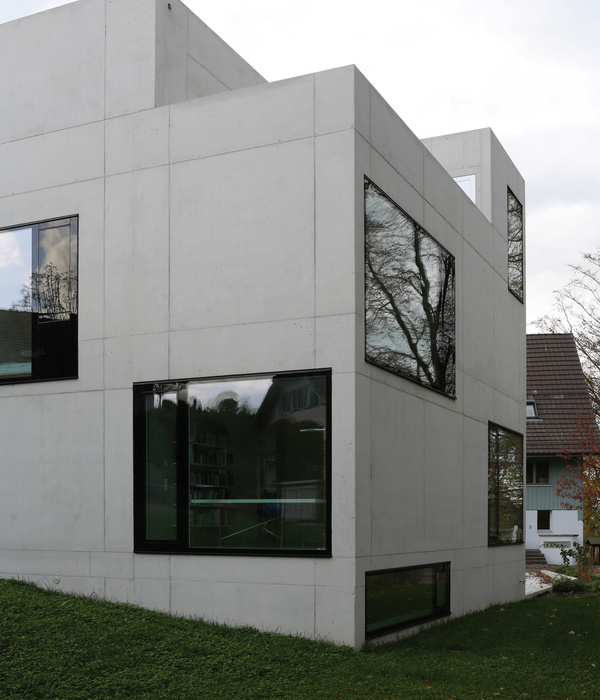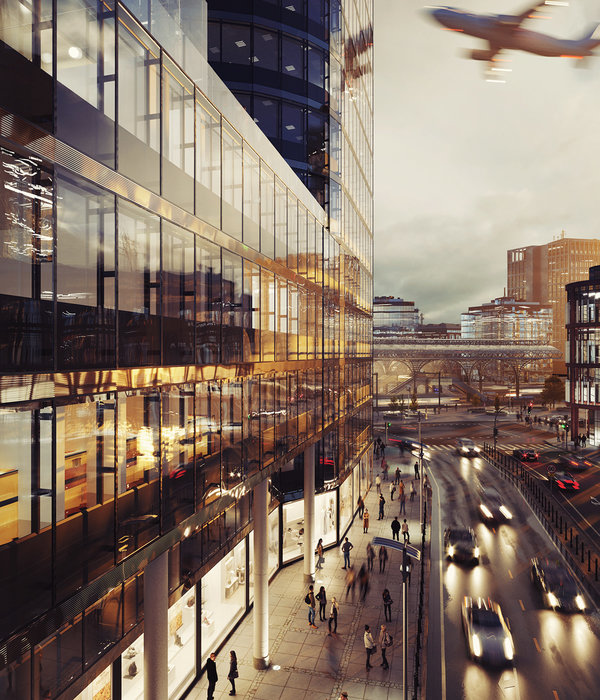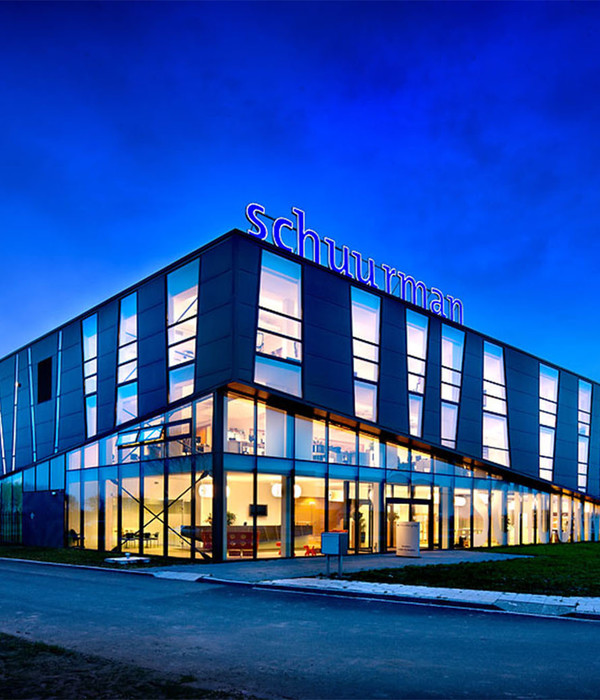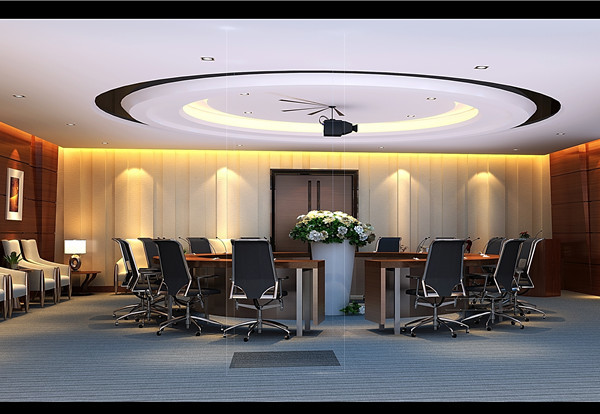▲
更多精品,
关注
“
搜建筑
”
在陈氏神经科学研究大楼的中心,有一个叫做 "核心 "的空间。它在视觉上连接了所有主要研究人员办公室、正式和非正式会议空间。一个铺有玻璃砖的天窗从上方照射进来,发出柔和的光芒。
这个空间通过流畅和有机的表达方式,与实验室的系统秩序形成对比。“核 ”的情感意图是激发和反映科学突破的时刻。就像森林中的一片空地,给人以发现的感觉,"核心 "渴望将各研究小组聚集在一起,围绕他们的中心目的--了解我们的人类思维。
At the Chen Neuroscience Research Building’s center is a space called the 'Nucleus'. It visually connects all Principal Investigator offices, formal and informal meeting spaces. A skylight lined with glass tiles bathes the space in light f
rom above with a softly shimmering glow. This space stands in contrast to the systematic order of the laboratories through a fluid and organic expression. The Nucleus' emotional intent is to inspire and reflect the moment of a scientific breakthrough. Like a clearing in the forest that gives one a sense of discovery, the Nucleus aspires to bring the research groups together around their central purpose of understanding our human mind.
模仿连接DNA片段的螺旋线,入口大厅显示出一个蛇形的楼梯,蜿蜒上升到建筑的核心和中央聚会空间。这个旅程不是线性的,到达 "核 "的过程是出乎意料的。透明度和秩序是实验室的指导概念。玻璃墙和门确保了自然光和在计算工作和环境控制的研究空间之间移动的便利性。
Mimicking the helix linking pieces of DNA, the entrance lobby reveals a serpentine stair that meanders up into the building’s nucleus and central gathering space. This journey is not linear and the arrival at the Nucleus is unexpected. Transparency and order are the guiding concepts for the laboratories. Glass walls and doors ensure natural light and ease of movement between computational work and environmentally controlled research space.
设备和系统经过深思熟虑的组织和统一,通过暖色调色板,突出的颜色作为编码元素,以方便寻路。这些姿态结合在一起的目的是为硬科学领域带来更柔和、更人性化的接触。协同涉众和研究团队,我们通过发现过程有机地工作,就像把拼图在一起,创造了一个组织系统的循环路径,重点空间,开放的办公室,实验室空间最大限度的灵活性和把阳光带进最深处的核心建筑。
Equipment and systems are thoughtfully organized and unified through a warm color palette with accents of color that act as coded elements to ease wayfinding. These gestures come together with the intent of bringing a softer, more human touch to spaces dedicated to hard science. Working collaboratively with the stakeholders and research teams, we worked organically through the discovery process, and like putting puzzle pieces together, created an organized system of circulation paths, focus spaces, open offices, and lab space that maximize flexibility and bring daylight into the deepest part of the core building.
这个偶然循环和协作空间的组织系统有意地创造了跨科学研究团队协作的碰撞。使用设计作为一种手段来培养和促进这些自发的互动,确保这些公共区域是温暖和诱人的是至关重要的。
This organized system of serendipitous circulation and collaborative spaces intentionally set out to create a collision of cross-scientific research group collaboration. Using design as a means to foster and promote these spontaneous interactions, it was critical to ensure these public areas were warm and inviting.
凭借专门为促进世界顶级神经科学家之间的学习和互动而设计的综合设计,陈氏神经科学研究大楼使研究人员离解开大脑的伟大奥秘又近了一步。这个项目强大的建筑愿景和规划促进了合作和偶然的互动,新的陈氏神经科学研究大楼是对充满自然日光和景观的开放连接空间的探索。其结果是一个专注、假设、想象和进行必要的严格讨论的地方,以解开人类思想的基础,并在我们更好地了解大脑的能力和复杂性时推动科学的发展。
With an integrative design specifically designed to foster learning and interaction among the world’s top neuroscientists, the Chen Neuroscience Research Building brings researchers one step closer to unlocking the great mysteries of the brain. This project’s strong architectural vision and planning to foster collaboration and serendipitous interaction, the new Chen Neuroscience Research Building is an exploration of open connected spaces filled with natural daylight and views. The result is a place to focus, postulate, imagine and conduct the rigorous discourse necessary to unravel the foundations of the human mind and propel science forward as we better understand the capacity and intricacies of the brain.
平面图
剖面图
建筑师:SmithGroup
地点:美国
面积:150000平方英尺
年份:2021
▼ 更多精品·
点击关注
本资料声明:
1.本文为建筑设计技术分析,仅供欣赏学习。
2.本资料为要约邀请,不视为要约,所有政府、政策信息均来源于官方披露信息,具体以实物、政府主管部门批准文件及买卖双方签订的商品房买卖合同约定为准。如有变化恕不另行通知。
3.因编辑需要,文字和图片无必然联系,仅供读者参考;
—— 作品展示、直播、
访谈、
招聘
——
搜建筑·矩阵平台
合作、宣传、投稿
联系
推荐一个
专业的地产+建筑平台
每天都有新内容
{{item.text_origin}}


